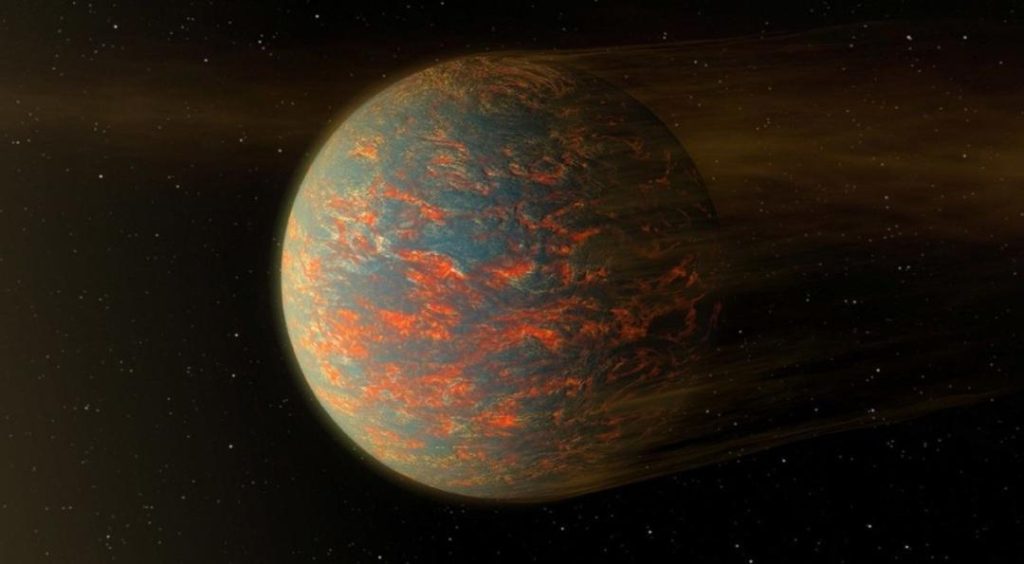
Newly-Discovered Super-Earth Heats Up & Freezes Every 300 Days
In a fascinating discovery, scientists have found a new exoplanet that orbits a Sun-like star 20 light-years from Earth. This newly-discovered “super-Earth” is a unique celestial body that experiences extreme temperature fluctuations, swinging between scorching heat and freezing cold every 300 days.
A “super-Earth” is a planet that is bigger than our own Earth but smaller than the gas giants like Neptune and Uranus. This newly-discovered super-Earth, which has been named K2-141b, is an extraordinary example of such a planet.
K2-141b orbits its star in an oval shape, which means that its distance from the star varies significantly throughout the year. As it moves closer to the star, it experiences extreme heat, with temperatures reaching as high as 3,000°F (1,600°C). This is hotter than the surface of Venus, which is known for its scorching heat.
On the other hand, as K2-141b moves further away from the star, it enters a deep freeze, with temperatures plummeting to -330°F (-200°C). This is even colder than the surface of Neptune, the eighth planet from the Sun in our own solar system.
This extreme temperature fluctuation is due to K2-141b’s elliptical orbit, which takes approximately 300 days to complete. This means that the planet spends about 150 days close to the star, experiencing extreme heat, and the remaining 150 days moving away from the star, experiencing extreme cold.
The discovery of K2-141b was made using the Kepler space telescope, a NASA spacecraft that was designed to detect exoplanets by measuring the decrease in brightness of a star as a planet passes in front of it. The telescope has been used to discover thousands of exoplanets since its launch in 2009.
The discovery of K2-141b is significant not only because of its unique temperature fluctuations but also because it provides scientists with new insights into the formation and evolution of planetary systems.
“K2-141b is a fascinating example of how planets can form and evolve in different ways,” said Dr. Jessie Dotson, a scientist at NASA’s Ames Research Center. “The extreme temperature fluctuations on this planet are a reminder that there is still much we do not know about the universe and its many mysteries.”
The discovery of K2-141b is also significant because it highlights the importance of continued exploration and research into exoplanets. As scientists continue to study K2-141b and other exoplanets, they may uncover new insights into the possibilities of life beyond Earth.
In conclusion, the discovery of K2-141b is a significant milestone in the field of exoplanetary science. This newly-discovered super-Earth is a unique celestial body that experiences extreme temperature fluctuations, swinging between scorching heat and freezing cold every 300 days. Further research into K2-141b and other exoplanets may uncover new insights into the formation and evolution of planetary systems and the possibilities of life beyond Earth.
Source:






